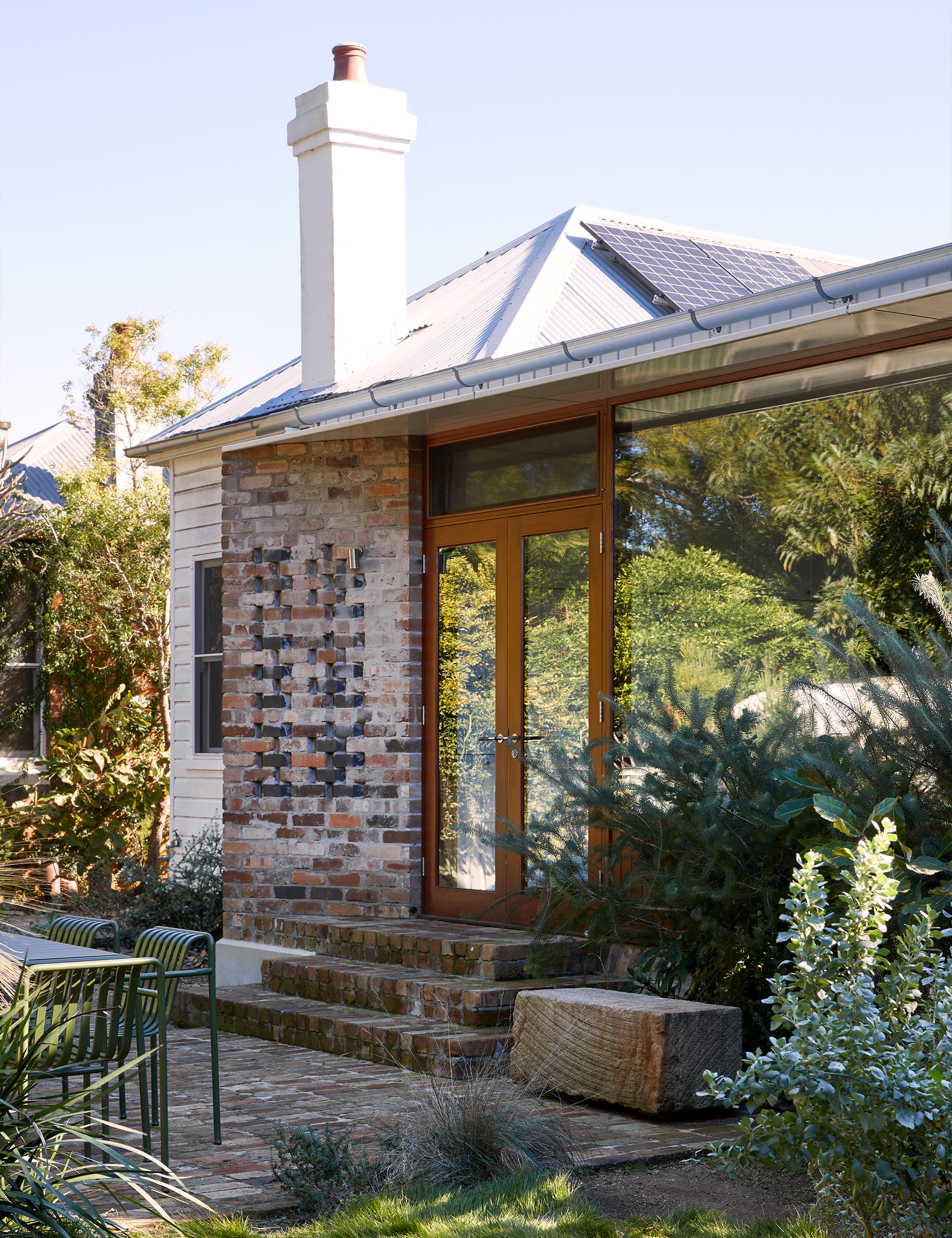Sometimes, the right home comes along when you least expect it. This was the case for Studio Dot director Steele Olney and his wife, art teacher and gardener, Rhiannon Dawson.
‘Our main goal was to buy a place with a big backyard,’ the architect says. ‘We had been outbid at auctions and we couldn’t seem to find the right place.’
Then, in 2016, they inspected an old weatherboard in Lorn, a quaint suburb in Maitland, NSW.
The house was in dire need of a renovation — the hardwood stumps had rotted, and the walls were cracked. Yet, it had a special charm about it, reminding them of a farm cottage with its wraparound verandah and abundance of fruit trees including mango, orange, lemon, lime, mandarin, feijoa, and avocado.
‘We were up for a renovation project, but really, we were hooked on the idea of raising kids in this backyard,’ Steele says.
With the initial updates focused on getting the house back to a liveable state, Steele and Rhiannon knew they wanted to restore the property sensitively, retaining existing features wherever possible.
‘We kept the original ceilings, floors, weatherboards, doors and windows,’ Steele says.
He also enlisted the help of friend and Passive House builder Evan Graham, who constructed the addition.
‘Evan was actually the one who opened my eyes to the world of passive design as a better way of building in about 2018, and I never really looked back,’ Steele says.
By the time the couple had saved up enough money to extend the house in 2020, Steele was a certified Passive House designer eager to put his knowledge of the energy-efficient building standard into practice.
‘For the new 40-square-metre extension, it was about reducing the need for energy input in the first place. We were somewhat impeded by the performance of the existing house, so we wanted to make sure anything we added was built to perform well,’ he says.
Drawing on core Passive House principles, Steele opted for double-glazed timber windows; vapour permeable airtight sarking on the roof, walls, and floor; and a continuous insulation layer to improve the home’s overall thermal envelope.
Weatherboards removed from the existing lean-to were given new life on the extension’s elevated roofline, positioned with soaring clerestory windows to capture north-eastern sunlight in winter and reduce reliance on artificial heating.
For the design, Steele was inspired to ‘flip’ the typical pairing of a brick house with a weatherboard lean-to — an architectural combination common in their suburb. Their period cottage now hides an addition clad in recycled bricks, with simple interiors that allow their verdant native garden to take centre stage.
A new open-plan kitchen, living, and dining area is the quiet hero of the floor plan, opening directly to the backyard the family had dreamed about for so long.
Adding to the home’s sustainable credentials, Steele replaced most of the gas appliances with electric, and installed a 6kW solar system on the roof. Next on the list is switching over to electric water heating — the ‘last piece of the puzzle.’
Steele and Rhiannon mostly tackled the internal fit-out themselves, as time allowed, over several years, which is why the home’s completion has taken some time. ‘We now have three children, Dot (9), Flo (6), Art (4),’ Steele explains. ‘When we first started our renovation, we had one!’
But the trials along the way have made this home all the more sentimental, as well as shaping the sustainable approach Steele now takes in each of his architectural projects.
‘It was important for us to take the time to do it right,’ he says. ‘It was something I really believed in — and I still do.’
This story originally appeared in Issue 01 of The Design Files Magazine, on sale now.

